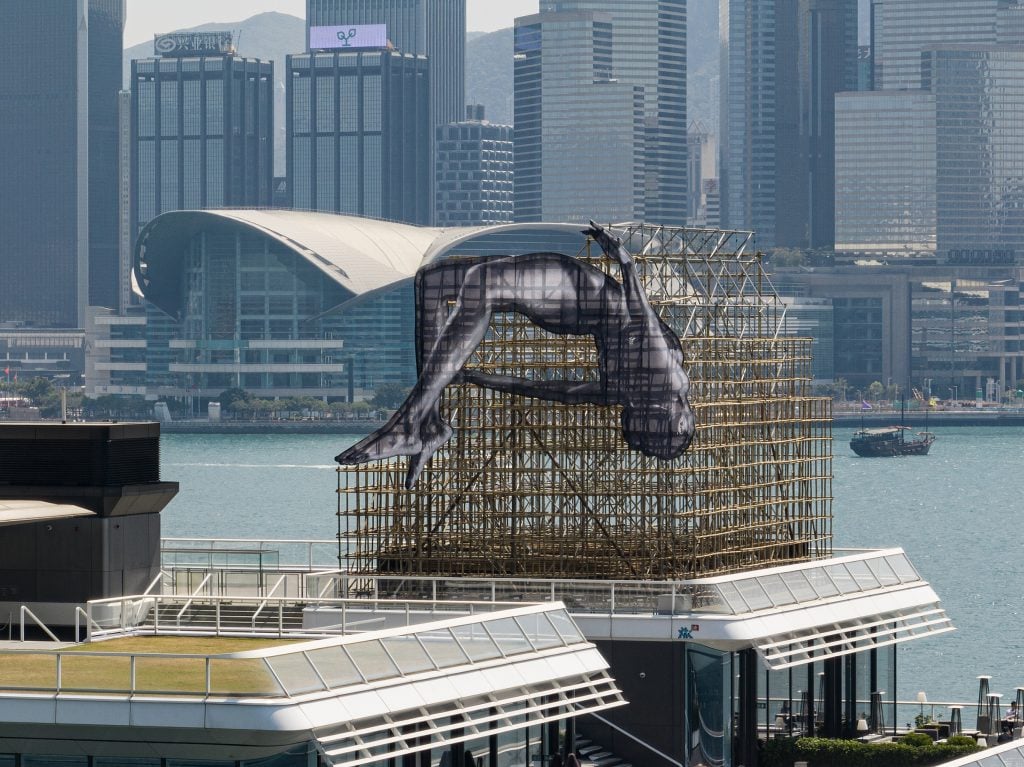Museum Director Responsible for Seized Basquiat Collection Has a Previous History of Discovering So-Called Lost Art


Discovering lost artwork is nothing new for Aaron De Groft, the museum director recently ousted from the Orlando Museum of Art (OMA) after a Jean-Michel Basquiat collection of questionable authenticity was seized by the FBI.
Before coming to Orlando in February 2021, De Groft oversaw the discovery and attribution of numerous works at the Muscarelle Museum of Art. Located on the campus of the College of William and Mary in Williamsburg, Virginia, the museum held an exhibition in 2017 dedicated to newly attributed artwork, an expanded version of which is currently exhibited at the Orlando museum. Another newly discovered piece, supposedly by American painter Jackson Pollock, was also scheduled to be shown at OMA under De Groft’s leadership.
During De Groft’s time as director of the Muscarelle from 2005 to 2018, the museum’s collection doubled in size, according to the Virginia Gazette. Some of these new acquisitions were previously unremarkable paintings from the 16th century to the 19th century, bought at auctions for low prices and then attributed to famed European artists from that time period.
De Groft was fired from the Orlando museum on June 28 after questions arose about the Basquiat show. An affidavit filed on June 23 by the FBI revealed the collection has been under investigation since 2013. The purported original owner of the collection denied ever purchasing the works and multiple Basquiat experts believe the collection to be fake.
In a brief interview with the Observer via LinkedIn, De Groft said he stands by the work he exhibited in Orlando.
“I gave public lectures on most of the paintings at the OMA to be questioned and scrutinized before hundreds of people at each lecture,” he wrote.
He declined to answer follow up questions. “I am not talking to any media for a while until I am vindicated,” he wrote.
In Virginia, De Groft oversaw a 2017 exhibition titled The Art and Science of Connoisseurship that showcased six of the Muscarelle Museum of Art’s new acquisitions, five of which “were acquired at public auctions with different authentications,” according to a 2018 Muscarelle newsletter.
“Establishing the authenticity of a work of art remains a sine qua non for a public collection or exhibition. The scarcity of connoisseurs today is the principal cause of the astonishing multitude of fakes and forgeries pouring through the highest levels of the international art market,” read the newsletter.
These works were primarily identified by former Muscarelle curator John Spike, who worked with De Groft to secure newly discovered pieces for the museum, according to Artsy. The two worked together to identify a 19th century Paul Cezanne piece, which they purchased unattributed at auction.

How accurate were De Groft’s attributions?
The work underwent scientific tests in order to reaffirm Spike’s attribution. Pigment identification testing was performed by a duo consisting of a painting conservator from the Colonial Williamsburg Foundation and Kristen Wustholtz, a chemistry professor at William and Mary. “We found an unusual substance, mauveine, that was discovered in the 19th century,” explained Wustholtz, who said the testing showed consistency with Spike’s attribution but couldn’t verify authenticity.
Spike did not respond to phone calls and emails requesting comment.
“During Aaron De Groft’s tenure at the Muscarelle Museum of Art, a member of the Colonial Williamsburg Foundation’s conservation team collaboratively analyzed the paint in a painting acquired by the museum to identify the paint’s date. The analysis identified the pigments in the painting but did not pertain to the authentication of the art,” wrote Ellen Morgan Peltz, a spokeswoman for the Colonial Williamsburg Foundation.
De Groft was also involved with the authentication of a 16th century portrait by Italian artist Titian. The art director reviewed archival material that originally refuted Titian’s attribution and found it had been misread, in addition to undertaking scientific testing on pigment size to confirm the portrait’s authenticity, according to an academic paper chronicling De Groft’s attribution.
De Groft, who has authored various publications on artists such as Italian painters Caravaggio and Michelangelo, earned a masters in art history and museum studies from the University of South Carolina and a Ph.D. in art history from Florida State University. He headed the John and Mable Ringling Museum of Art in Sarasota, Florida, where he also held a curatorial position, before becoming art director at the Mucarelle.
Not everyone agreed with his conclusion regarding the Titian. “The portrait is, to most people’s eyes including my own, a feeble work unworthy of Titian himself,” wrote art historian Charles Hope, former director of London’s Warburg Institute, in an email. “I tend to be suspicious of art historians using exotic scientific techniques to boost the credibility of second-rate pictures. It is an extremely common practice, and seldom, in my experience, produces convincing results.”
Many of the works discovered at the Muscarelle during De Groft’s tenure and showcased in The Art and Science of Connoisseurship are currently being exhibited at OMA. The ongoing exhibition, entitled Connoisseurship & Collecting, contains 21 paintings and has been running since September of last year. “The Muscarelle show and the OMA show are basically the same with the OMA show being expanded,” De Groft wrote via LinkedIn.
The OMA was supposed to exhibit a disputed Pollock
In his OMA lectures , De Groft included discussions of pieces discovered during his time at the Muscarelle, including the Cezanne work and Titian portrait. De Groft was also scheduled to give a lecture called ‘Jackson Pollock’s “Lost” Best Painting: Comstock Pollock, 1950,’ regarding a Pollock piece that was supposed to be exhibited at OMA in January.
“Pollock was an idea that is not happening now,” wrote De Groft. The painting in question was previously co-owned by lawyer Pierce O’Donnell, who is also part-owner of the Basquiat collection currently under FBI investigation. O’Donnell represented himself in 2016 in a court dispute over the Pollock’s ownership, and said that he now isn’t technically an owner but remains involved with the painting.
O’Donnell confirmed that the Pollock is no longer going to be exhibited at OMA, adding that an agreement for the exhibition had never been reached. “The owner decided that she didn’t want it exhibited there,” he said. The work’s attribution to Pollock has been called into question, and O’Donnell revealed that it hasn’t been authenticated by the now-defunct Pollock-Krasner Authentication Board or the International Foundation for Art Research (IFAR). This was confirmed by Dr. Sharon Flescher, executive director of IFAR, in an interview with the Observer.
“I know that specific work is not included in the artist’s official catalogue raisonné,” said art advisor Todd Levin, director of Levin Art Group. When it comes to contemporary artists like Pollock or Basquiat, records of their work are extensively documented either in catalogue raisonnés or online, he said.
“However, the modern model of the art gallery didn’t exist until the late nineteenth century. There was no prior thorough organized documentation,” said Levin, adding that it isn’t uncommon for attributions of older works to change throughout the years as new information comes to light.
It’s still unclear whether this will be the case for works discovered and reattributed at the Muscarelle under De Groft’s leadership.
“De Groft has a history of being involved with so-called discoveries,” said Levin. “The question that remains is how accurate has his past performance of reattributing works been?”
The Muscarelle Museum of Art and OMA did not respond to requests for comment.



:format(webp)/https://www.thespec.com/content/dam/localcommunities/burlington_post/entertainment/2023/03/17/a-more-beautiful-and-meaningful-space-burlington-residents-invited-to-indigenous-art-walk/10811718_IndigenousArtistMarvinTerryGP01.JPG)



:max_bytes(150000):strip_icc()/MaxineLipnerheadshot1-20f056879a574645a653ed1e091c6a43.jpeg)


